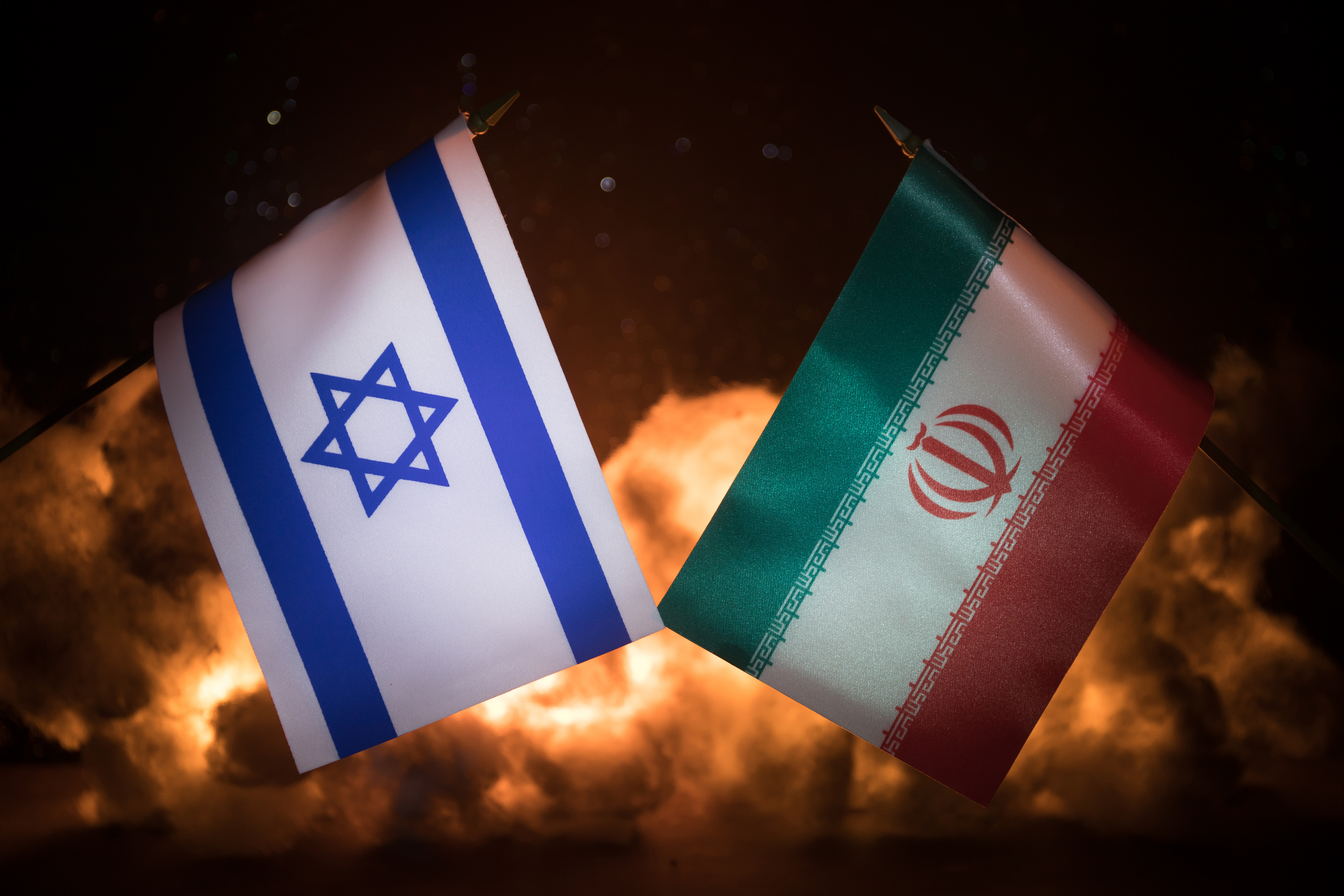
IRAN’S MISSILE ARSENAL VS ISRAEL’S MISSILE DEFENCE: WHO WILL EMERGE TRIUMPHANT?

As India was busy in preparations for the impending Holy Navratra Festival, the skies over Central/Southern Israel were lit up when Iran launched an unprecedented attack with 180-200 missiles on its adversary in the Southern Levant, on the evening of 1st October 2024. Iran’s Islamic Revolutionary Guard Corps (IRGC) stated that as part of Operation True Promise-2, it had “fired missiles at Israel in response to Israeli attacks in Gaza/Lebanon, as well as the assassinations of top IRGC, Hamas and Hezbollah leaders”. The IRGC further stated that the missiles were aimed at “vital military/security targets”, specifically at three military bases in the Tel Aviv area and Jerusalem. The missile attack was reportedly accompanied by a large-scale cyber-attack, which could have involved, as in the past, data deletion, ransomware insertion and an ‘Internet-of-things’ attack.
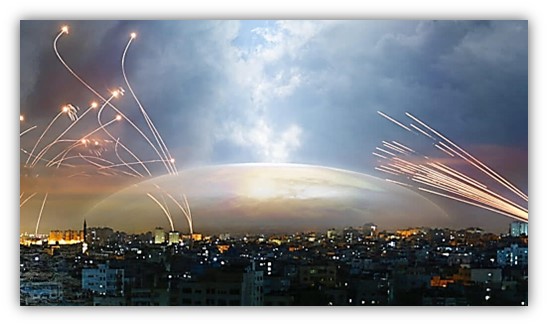
Source-jewishunpacked.com
The outcome of this unprecedented missile attack has been contested by both Nations, wherein Iran mentions that a large number of the intended targets were hit, including the Negev Airbase at Nevatim in Southern Israel, the Tel Nof Airbase in Central Israel and Mossad headquarters in Glilot. Israel categorically refutes a large portion of this claim, stating that it had, with assistance from the United States (US), intercepted ‘a large number’ of missiles, but that there were ‘isolated’ impacts, resulting in some damage/one fatality.

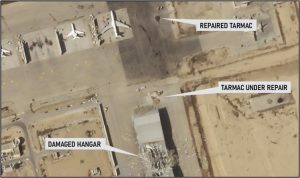
Damage at Negev Airbase:Source-horsdoeuvresofbattle.blog/planet.com
Be these claims as they may, the October-1 missile attack was far larger and more serious than Operation True Promise, a similar, but less effective attack in April this year, and has resulted in an unwelcome rise in tensions, which could quickly escalate into a full-blown regional conflict.
Apropos, it would be relevant to examine the efficacy of Iran’s missile arsenal vis-a-vis the capabilities of Israel’s much-spoken about ballistic missile (BM) defence (BMD) capabilities.
While indirect-fire strikes from the Gaza Strip/Lebanon on Israel would mainly be in the form of Artillery/rocket ‘proxy’ attacks by Hamas/Hezbollah, the shape of conflict between Iran and Israel would predominantly involve missile strikes and aerial assaults between these two geographically separated Nations. Field/medium artillery and Multiple Launcher Rocket Systems (MLRS) of the Iranian Armed Forces have therefore been excluded from this analysis.
IRAN’S MISSILE ARSENAL
The London-based International Institute for Strategic Studies, has assessed that Iran fired a combination of Shahab-3 Liquid-Fuelled BM from the Shiraz Missile-Base in Southwest Iran and more advanced solid-fuelled vectors (likely the Haj Qassem and/or the Kheibar Shekan Missiles) from several bases, including Tabriz, in Northwest Iran, in the October-1 attack. This was unlike the April 2024 attack, which also saw a mix of cruise-missiles and drones being used, the latter seeing little effectiveness.
While it may be difficult to ascertain exact numbers of missiles held with Iran, the US’ Wisconsin Project on Nuclear Arms Control (WPNAC), in 2023, appreciated that Iran’s arsenal had over 3000 BM, making it the largest in the Middle-East. This number apparently does not include its cruise-missiles. It is appreciated that Iran’s missile-program is largely based on North Korean/Russian designs and Chinese expertise. According to another 2023 report by the US-based Foundation for Defense of Democracies, Iran continues to develop underground missile-depots, which include transportation means/firing platforms, along with subterranean missile production/storage facilities. This appreciation was vindicated when Iran conducted its first underground BM launch in June 2020! Iran’s BM continue to improve in range, lethality and precision, owing to decades of reverse-engineering of existing Russian/North Korean designs and research into lighter/composite airframes.

Iran’s Missile Coverage:Source-missilethreat.csis.org
While most BM in Iran’s arsenal are either Short-Range BM (SRBM), with ranges up to 1000 Km, Iran also possesses Medium-Range BM (MRBM), with ranges up to/over 2000 Km, which puts the entire Middle-East land-mass, Persian Gulf, South Asia, the Central Asian Republics, Eastern Europe and Arabian Sea within range.
In 2015, Iran publicised the launch of the Emad-1, claimed to be Iran’s first long-range missile that is guided throughout its flight, thus enabling high-precision strikes. Iran has also announced plans for Emad-2 with greater precision, and the Sejjil Solid-Fuelled MRBM, a Trajectory-Correctable Munition (TCM).
In 2019, Iran publicised the launch of Khorramshahr-2, supposedly Iran’s deadliest long-range missile, with trajectory-correction capability till impact. Iran is also developing a ground-launched land-attack cruise-missile (LACM).
Iran also possesses cruise-missiles such as Kh-55, an air-launched nuclear-capable weapon with a range up to 3000 km, and the advanced anti-ship missile Khalid Farzh, with a range of about 300 km, capable of carrying a 1000 kg warhead.
The Shahab-3, of 2003 vintage, is reportedly the base-missile for all Iran’s liquid-fuelled MRBMs. The missile can be fired from silos/mobile vertical launchers.
Since 2008, Iran has conducted multiple launches of the two-stage Safir Space Launch Vehicle (SLV), and the larger two-stage Simorgh SLV, which could serve as a test bed for developing ICBM technologies. SLVs are designed to launch satellites into orbit but could potentially be reconfigured as BM, due to similar performance characteristics.
A table of Iran’s missile arsenal as of February 2024 is appended below.

Source-iranwatch.org
Note:- 1. CEP-Circular Error of Probability.
2. LACMs function essentially as pilotless aircraft and do not fly on a predictable ballistic trajectory, thus posing a challenge to missile defence systems (MDS).
In June 2023, Iran presented its first domestically produced ‘hypersonic BM’, the Fattah-1, reportedly used for the first time in the October-1 attack. Hypersonic missiles fly at Mach 5/greater speeds (read more @ https://chanakyaforum.com/hypersonic-weapons-new-sprint-kings-in-strategic-weapons-race/). Iran claims that Fattah-1 travels at Mach 13-15, bringing its speed into the high-hypersonic range. Also, the term “hypersonic” usually refers to ‘hypersonic glide-vehicles’(HGV)/‘hypersonic cruise-missiles’(HCM), both of which manoeuver at hypersonic speed inside the Earth’s atmosphere, making them difficult to detect/intercept. Fattah-1, on the contrary, appears to be a Manoeuverable Re-entry Vehicle, suggesting that this vector can only make flight-path adjustments shortly before impact, making it vulnerable to interception.
A scan of Iran’s missile facilities would indicate that Iran has used/is using its Westward Air Force Bases as missile launch-sites. Most of these bases, including missile-production facilities (which might also be utilised as launch-sites) lie in Western/Central Iran, thus indicating an unambiguous bias towards the Levant in general and Israel in particular. That having been said, Iran’s longer-range missiles would have a far greater regional reach, as elucidated earlier, allowing it to hit targets within Israel’s mainland as well as allied targets in the region.
While the existence of Iran’s nuclear-weapons program is debatable, it is pertinent to note that Tehran, Karaj, Bushehr, Arak and Isfahan have nuclear-research facilities. The latter two also have reactors, with reported uranium/plutonium enrichment facilities. Natanz, in Central Iran, is the country’s primary nuclear fuel enrichment facility, capable of holding up to 100,000 centrifuges underground. Qom, to the Northeast of Arak, is reported to be the location of an underground uranium/plutonium enrichment site. Notably, all these locations are in the vicinity of established missile-production sites. The list mentioned here may not be exhaustive. Khorrambad, in Lorestan Province and Kenesht Canyon/Pank Pelleh, both in Kermanshah province, are identified underground missile-bases in Northwestern Iran, where storage/launch facilities are available. Interestingly, such missile storage/launch sites also arguably accord survivability/ability to launch nuclear weapons in a ‘second-strike mode’!
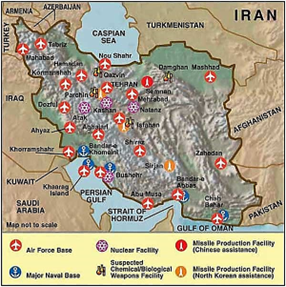
Iran’s Missile Faclities:Source-iranpoliticsclub.net
ISRAEL’S MISSILE DEFENCE
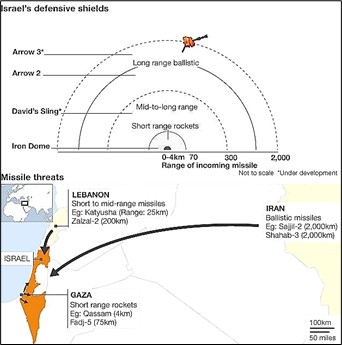
Israel’s MDS:Source-bbc.com
Israel is known to have a multi-layered MDS designed to intercept a broad spectrum of threats, which include BM, cruise-missiles and long-range rockets. These capabilities at present seem to suffice for a country measuring 424 Km x114 Km (at its widest).
The innermost layer consists of the Iron-Dome, a mobile, all-weather Air Defence (AD) system, developed with significant US funding and designed to intercept MLRS and long-range Artillery/rockets fired from 4-70 Km away. Iron-Dome system has three main components-a 3D AESA multi-mission detection & tracking radar, a Battle Management & Weapon Control Center, which calculates the extrapolated impact point of the missile/rocket from the tracked trajectory and analyses the threat, and a Missile Firing Unit which launches the Tamir high-explosive blast-fragmentation (HEBF) Interceptor Missile (~US$ 70,000 each). The Tamir mounts electro-optic (EO) sensors and steering-fins for high manoeuverability. A typical Iron-Dome battery has 3-4 launchers, with 20 missiles/launcher. Each launcher is independently deployed and operated remotely via a secure wireless connection. Israel is likely to have deployed up to 10 Iron-Dome batteries, each protecting an urban area of approximately 150 sq Km, with a 90% interception probability. The Iron-Dome can also intercept UAVs and precision-guided munitions.
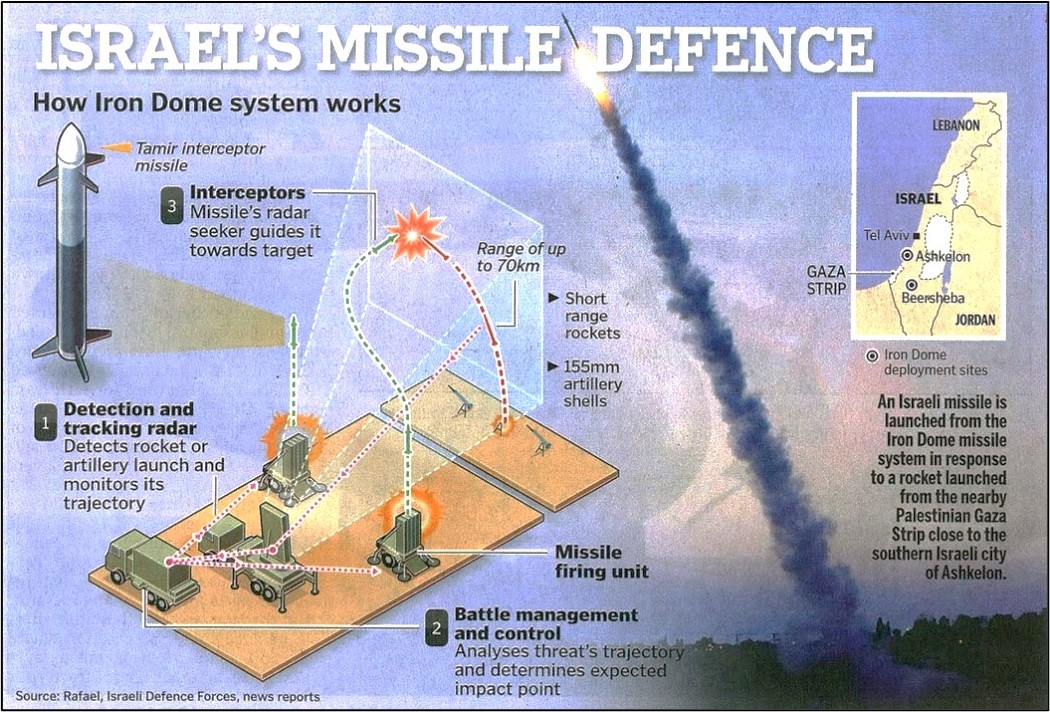
Graphic Explaining Iron-Dome Operation:Source-heebonics.blogspot.com
The next layer of the MDS is the David’s Sling Weapon System (DSWS), jointly developed by US and Israel and operational since 2017. The DSWS is used against short/medium-range missile threats in the terminal phase. DSWS incorporates a trailer-mounted vertical missile firing unit with 12 missiles, an Elta EL/M-2084 AESA Multi-Mode Fire-Control Radar (surveillance mode tracking-1100 targets up to 474 Km, fire control mode tracking-200 targets/minute up to 100 Km), a Battle Management/Operator Station (BMC), and the Stunner two-stage Missile Interceptor System (SMIS). The SMIS intercepts SRBMs, cruise missiles, long-range rockets and UAVs at hypersonic speeds (up to Mach 7.5). It uses dual EO and CCD/IR seekers, in addition to radar-tracking, to distinguish between decoys and actual missile warheads. The BMC calculates the interception point from the extrapolated target path. Once tracked, the EO/IR sensors acquire target information in day/low-light conditions respectively. The first stage is a solid-fuel rocket booster, while the kinetic-kill vehicle mounts a pulse-motor for added velocity/manoeuverability during interception and has no separate warhead. Reliable interception ranges are up to 300 Km. Israel is likely to have deployed 2-3 batteries. The SMIS bridges the gap between Iron-Dome and the long-range Arrow interceptors (also incorporated into the DSWS).
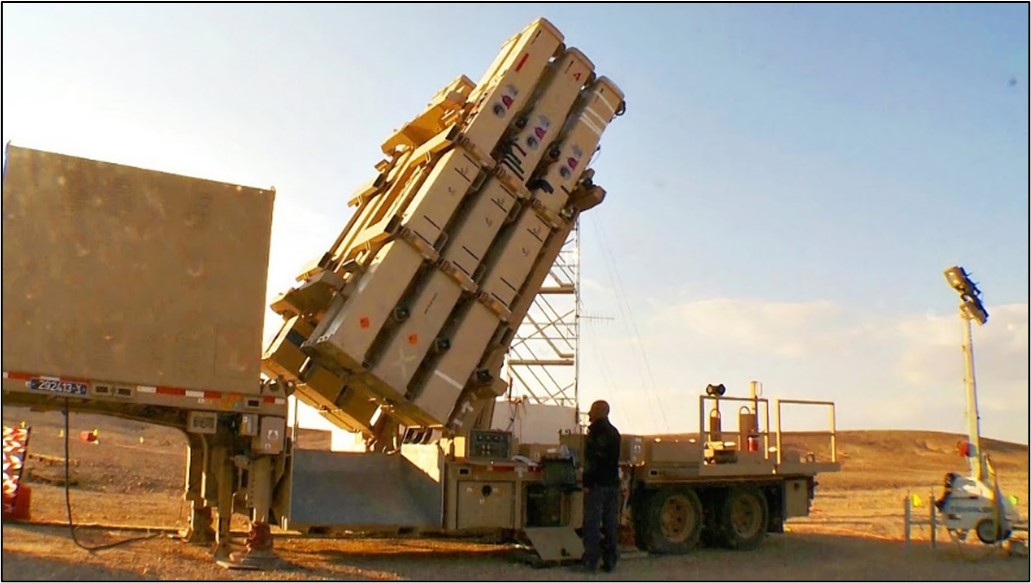
A Deployed DSWS:Source-gagadget.com
The Arrow MDS is one of the most advanced in the world and is jointly funded/produced by Israel and the US. It forms the outermost shield of Israel’s MDS. It consists of the supersonic Arrow-2/3 Missile HEBF Interceptors, the Elta EL/M-2080 Green Pine/Great Pine Early-Warning AESA radars (capable of detecting 30 targets travelling at over 3000 m/s, at ranges up to 500 Km/900 Km respectively), the Golden Citron networked C3I Center which can simultaneously control 14 interceptions, and the Brown Hazelnut Launch Control Center, capable of pan-azimuth launch coverage. The Arrow-2 is designed for endo-atmospheric interception of MRBMs, while the Arrow-3 is designed for exo-atmospheric interception of longer-range BM in the space-flight phase of their trajectories. The system is operated by the Israeli Air Force’s Protective Sword unit under its AD Command and has been operational since 2000. The two-stage Arrow interceptors mount passive IR and active radar seekers, fly at a speed of Mach 9 and offer an interception range of 90-250 Km. Israel is likely to have deployed 3-4 Arrow Batteries. Each battery is equipped with 4-8 road-mobile transporter-erector-launchers, with six launch-canisters each. The under-development Arrow-4 is specifically designed to intercept HCM/HGV.
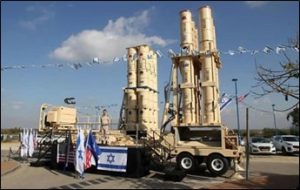
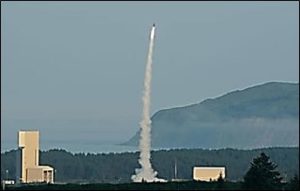
Israeli Arrow Interceptors Mounted on TEL, Arrow 3 Being Launched:Source-msn.com
The October-1 BM interception also involved the US. A Pentagon press statement confirmed that two of the three independently deployed guided-missile destroyers (GMD) of the US Navy deployed in the Eastern Mediterranean-the USS Bulkeley/USS Arleigh Burke/USS Cole launched at least a dozen interceptors against Iran’s’ BM fired into Israel. The existing Great Pine Radar of the Arrow MDS is optimized to collaborate with the American AN/SPY-1D PESA 3D Radar, part of the Aegis BMD System on these ships. These GMD likely used the RIM-161 (SM-3) BM interceptor of the Aegis, designed to intercept BM during re-entry. The US Glide Phase Interceptor (GPI) is also under development, which will provide defence against hypersonic weapons. The GPI will be integrated with a variant of the Aegis and could see deployment in this region in the near future. The US Government has reportedly authorised dispatch of a THAAD Battery to Israel in wake of the October-1 attack (read more about THAAD @ https://chanakyaforum.com/s-400-triumf-transforming-indias-air-defence/).
HOW ARE THE ODDS STACKED?
There are reports that the Iron-Dome system was likely overwhelmed during the Hezbollah rocket attack on Northern Israel, suggesting that the system is susceptible to saturation under massed artillery/rocket fire. The Arrow MDS/DSWS successfully intercepted many of the missiles in the October-1 attack, albeit not 100%, as scattered missile impacts elucidated above indicate. Greater interception success during the April 13-14 cruise/ballistic missile and loitering munition attack was due to a lesser number of vectors used by Iran (approximately 50-60% of the October-1 attack, discounting drones), larger reaction time available to intercept cruise missiles/drones due to their significantly lower velocity, contribution of Israeli fighter planes in shooting down a significant number of drones and the fact that US, UK, France and Jordan assisted in missile-interception (the latter as the flight-path of some missiles were routed through Jordanian airspace).
The October-1 attack consisted almost entirely of BM, necessitating the MDS to take on the entire role of interception, leading to saturation of the MDS in isolated cases.
Another factor is the cost of such interceptions. A single Arrow interception costs Israel approximately US$ 3.5 Million, while a DSWS engagement costs US$ 1 Million. This clearly suggests that such interceptors can only be reserved for critical engagements, where the nature of the incoming vector or the impending target warrant such importance.
Again, the present attacks are analysed in isolation, without any evidence of a retaliatory missile strike by Israel, in spite of it having one of the most (if not the most) technologically advanced missile arsenals in the Middle-East. The Israeli Air Force, which fields the F-15, F-16 and F-35 Air Superiority/Multi-Role fighters, is capable of inflicting significant damage against Iranian ground/air targets. The significantly more lethal Israeli Air Force/missile program and its MDS would ensure that a large portion of Iran’s arsenal is degraded, while safeguarding the former. While Iran’s AD has seen some upgrades including procurement of modern AESA radars from China, its MDS mainly rests on the indigenous Bavar-373 and Ra’ad, the Russian S-300, the Chinese HQ-9 BMD Systems and the indigenous Armaan MDS, unveiled in February 2024. Pure anti-aircraft systems include, among others, the Pantsir (S-22) close-range AD system, the Tor AD system and 9-15 launchers of the Khordad-15 AD system, supposedly capable of tracking stealth targets and similar in capabilities to the Russian S-350 medium-range Surface-to-Air Missile (SAM) system, and the Russian S-200 SAM system. These might prove insufficient to thwart a full-scale Israeli air/missile attack, with the Israeli Air Force resorting to use of long-range air-to-surface ordnance/cruise missiles.
While it is true that Israel has not launched a retaliatory kinetic ‘riposte’ after the October-1 attack, Iran experienced significant cyberattacks on 12th October, severely disrupting operations across nearly all branches of its government. Iran’s nuclear power plants, port transportation networks, energy distribution systems and municipal networks were targeted, purportedly to paralyse normal functioning, show Iran’s regime in poor light and as a portent of a possible physical attack on Iran’s much-coveted nuclear facilities. The cyber-attack was a stark reminder of Operation Olympics Games, the alleged joint US-Israel cyber-attack on Natanz in 2008, which halted 5000 centrifuges, one-fifth of the total capacity at the time.
Pertinently, Iran’s significantly larger ground-forces are rendered ineffective due to the inter-se geographical separation as discussed earlier. However, Israel must be prepared for a physical, Iran-instigated, coordinated Hamas/Hezbollah/Houthi attack, duly supported by missile/drone attacks by Iran. This presents a serious threat since Israel’s ‘boots-on-ground’ are unlikely to be augmented by any of its allies, though assistance by way of missile-defence, missile/air assaults and Naval blockades might be forthcoming.
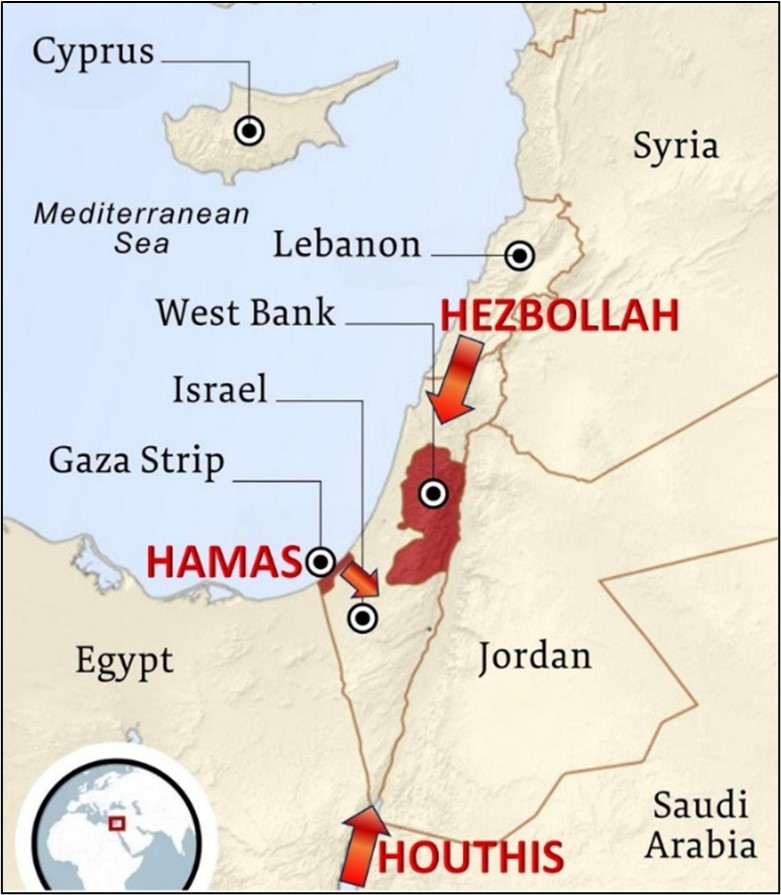
Possible Coordinated Ground Offensive Against Israel:Source-thehindu.com(Modified)
Despite their ‘nuclear opacity’, it is widely believed that Israel possesses a relatively advanced nuclear-weapons program ( the Jericho II/III missiles are allegedly nuclear-tipped), as has Iran been suspected for decades of running a covert (if nascent) nuclear-weapons program. Should the conflict degrade into a nuclear exchange, likely triggered by Israel’s targeting of Iran’s nuclear facilities, the protection of existing (assumed) nuclear vectors for a second-strike will determine ‘success’. However, the danger of escalation of such a conflict will see unprecedented pressure on both adversaries to refrain from such a misadventure.
Conclusion
Successes/ losses in this stand-off conflict between Israel and Iran would hinge on the efficacy of the factors mentioned above, at critical space/time junctures. It might well boil down to a ‘vectors vs thwarters’ numbers game, and both sides will do well to utilise critical assets to good effect, while keeping supply/procurement chains energised for sudden surge requirements.
Disclaimer
The opinions expressed in this article are the author’s own and do not reflect the views of Chanakya Forum. All information provided in this article including timeliness, completeness, accuracy, suitability or validity of information referenced therein, is the sole responsibility of the author. www.chanakyaforum.com does not assume any responsibility for the same.
Chanakya Forum is now on . Click here to join our channel (@ChanakyaForum) and stay updated with the latest headlines and articles.
Important
We work round the clock to bring you the finest articles and updates from around the world. There is a team that works tirelessly to ensure that you have a seamless reading experience. But all this costs money. Please support us so that we keep doing what we do best. Happy Reading
Support Us






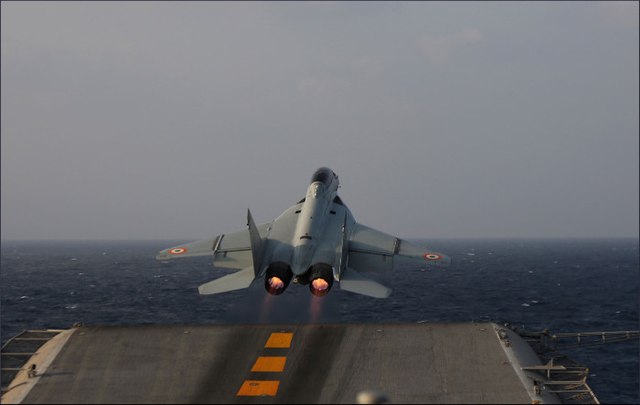
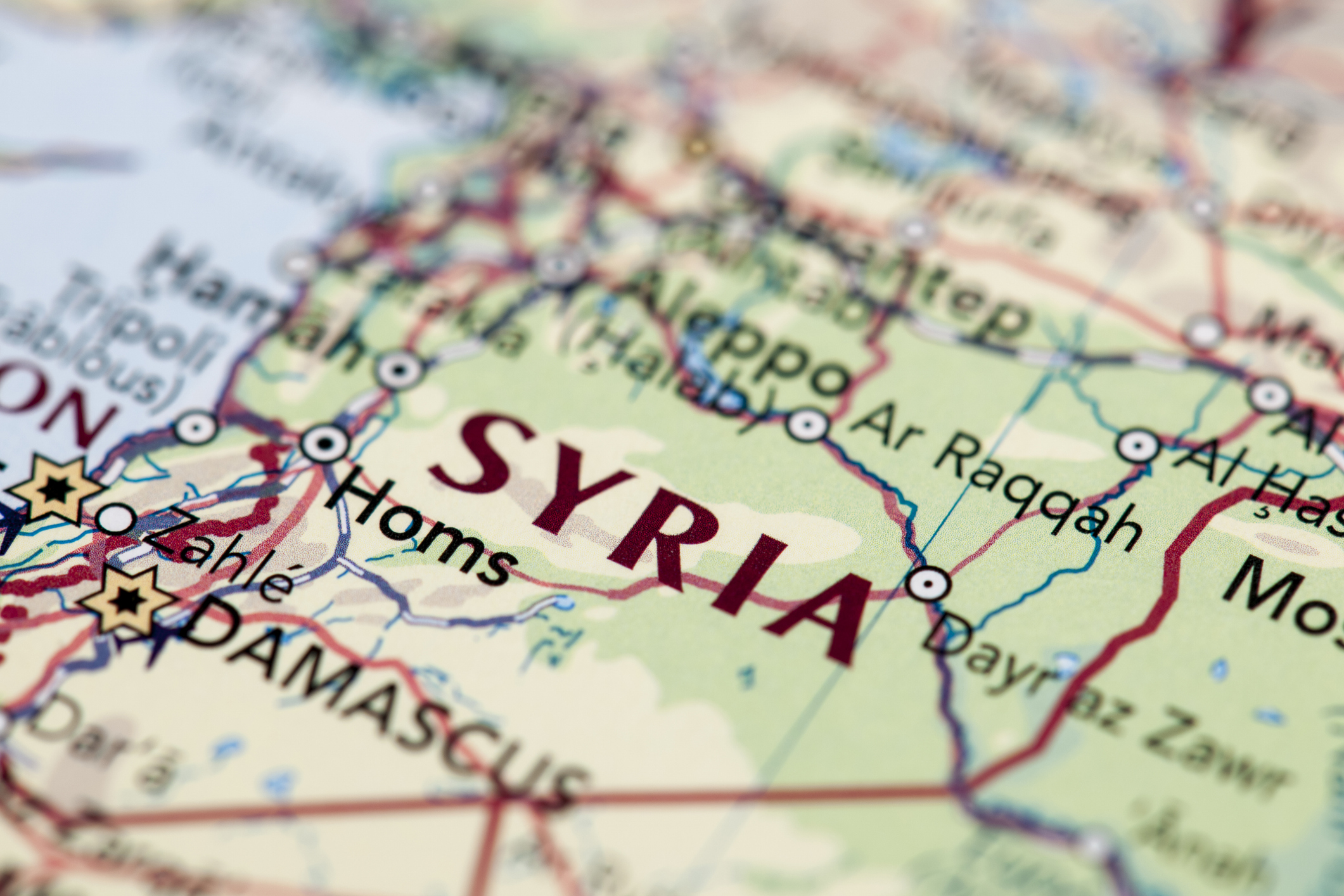

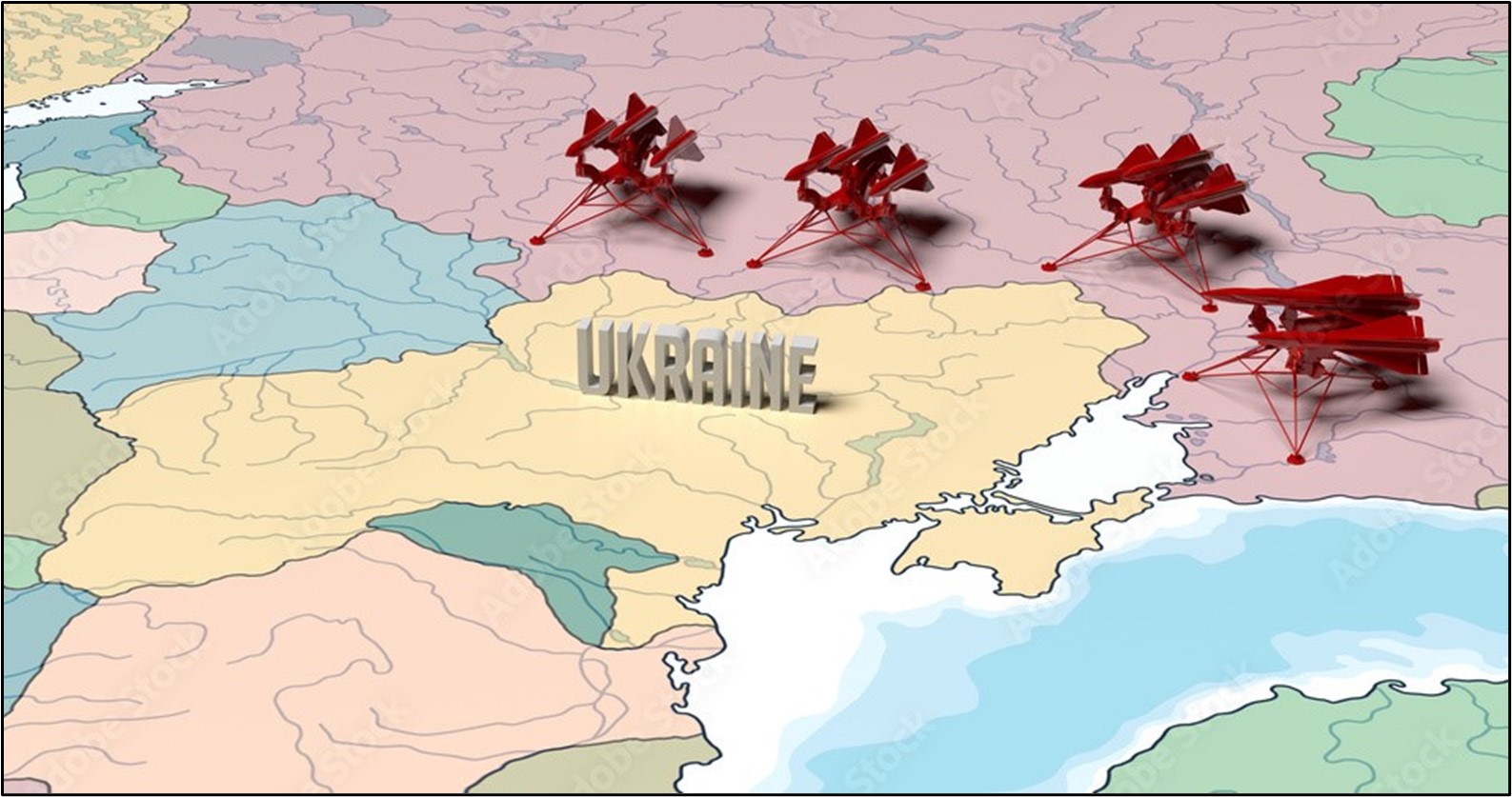











POST COMMENTS (0)